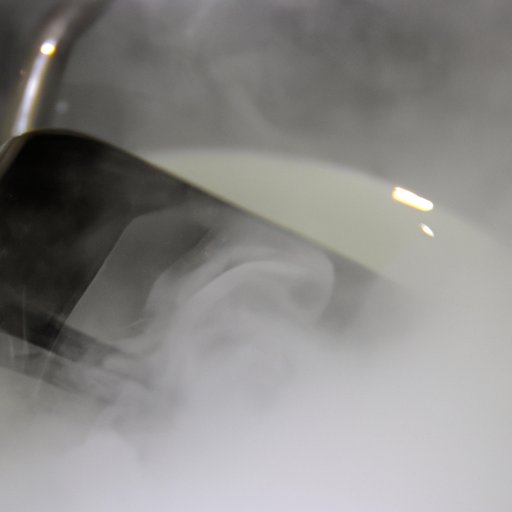
I. Introduction
Knowing when water has boiled is crucial for cooking and other daily tasks. Boiling water kills bacteria and viruses, is used for cooking pasta, rice, and other grains, making hot beverages such as tea or coffee, and for sterilizing instruments. In this article, we will discuss different methods to recognize when water has boiled.
II. The Rolling Boil Method
The rolling boil method is the easiest and most popular way to determine if water has boiled. When water reaches boiling point, it forms bubbles that rise to the surface and burst. At the boiling point, these bubbles become more vigorous and rapid, creating a rapid motion or rolling boil. In this method, the water should be hot enough to create a rolling boil but not enough to splash out of the pot. A rolling boil generally indicates that the water has reached 212 °F or 100 °C, the boiling point of water at sea level.
III. The Steam Method
The steam method is useful in situations where you cannot see the water, like with a covered pot or pressure cooker, and when the rolling boil method is not applicable. When water is boiled, steam rises from the surface of the water, indicating that it has reached boiling point. The steam may be visible or not depending on the size and opening of the pot. Be careful when uncovering the pot as the steam can cause burns.
IV. The Sound Method
The sound method is good for recognizing when water is boiling without looking at it. As water warms up and reaches a boiling point, it makes a distinctive sound. The sound results from air bubbles continually escaping from the bottom of the pot. The sound varies depending on the amount of water, the size of the pot, and the intensity of the flame. The boiling water produces a consistent hissing sound. Once the sound of boiling becomes too loud or erratic, it usually means that the water has boiled down too much or the heat needs adjusting.
V. The Visual Cue Method
The visual cue method is based on bubbles that are visible on the surface of the water. Before the boiling point is reached, bubbles start to form at the bottom of the pot. They are small and initially cling to the sides of the pot. As the temperature increases, these bubbles rise to the surface, and new bubbles form simultaneously. Once the water reaches boiling point, these bubbles become larger and more rapid, forming a rolling boil. Using the visual cue method can be useful for people who have difficulty hearing or seeing.
VI. The Temperature Method
The temperature method requires using a thermometer to measure the temperature of the water. Using this method, you can determine exactly when the water reaches the boiling point. While the boiling point of water is 212 °F or 100 °C at sea level, the temperature changes depending on your altitude. As the boiling point decreases as altitude increases, you should adjust the temperature accordingly. The advantage of using the temperature method is its precision; however, a thermometer does require equipment.
VII. Conclusion
To summarise, different methods can be used to recognize when water has boiled, such as the rolling boil method, the steam method, the sound method, the visual cue method, and the temperature method. The rolling boil method is a quick and straightforward way to know when water is boiled, while the other methods are useful in some situations. Knowing when water is boiled is vital for cooking and other daily tasks, and it is essential to use the correct method that works best in each situation. We encourage readers to try out different methods to see which works best for them.





